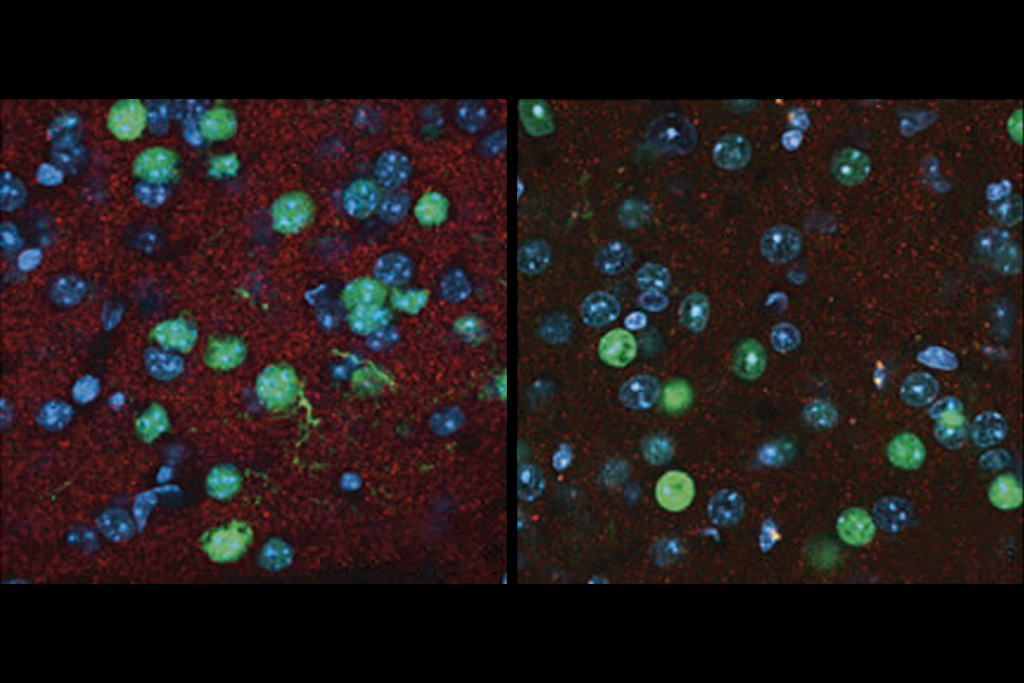Rousing silenced X chromosome may treat Rett syndrome
Drugs that activate the silent copy of the X chromosome in women may be able to undo the damage from mutations in genes located there. The study, published 2 September in Proceedings of the National Academy of Sciences, offers hope for treating Rett syndrome and other disorders linked to the chromosome.
Drugs that activate the silent copy of the X chromosome in women may be able to undo the damage from mutations in genes located there. The study, published 2 September in Proceedings of the National Academy of Sciences, offers hope for treating Rett syndrome and other disorders linked to the chromosome1.
One copy of the two X chromosomes women carry is randomly silenced in each cell of the body. This occurs when the chromosome makes small pieces of RNA, called X-inactive specific transcript, or Xist. A cloud of Xist coats the chromosome and blocks its expression.
Female mice lacking Xist die in utero, so X inactivation was thought to be required for survival. The new study suggests otherwise.
The researchers identified 13 genes required for X inactivation. Female mice missing STC1, one of these genes, show expression of genes from both copies of X and have no obvious symptoms.
“The mouse findings suggest that you might be able to survive without X chromosome inactivation,” says lead researcher Michael Green, professor of molecular medicine at the University of Massachusetts Medical School.
The results are of particular relevance for Rett syndrome, which is caused by a mutation in one copy of the X chromosome gene MeCP2. The condition is usually fatal in boys, who have no healthy copies of the gene to compensate for the mutation. Because of random X inactivation, girls with the syndrome have some cells with normal MeCP2 and some with the mutant.
The new study raises the possibility of using drugs to activate the silent X chromosome and restore the expression of normal MeCP2 in girls. (At least two of the 13 genes identified in the new study are targets for existing drugs.) A similar approach is showing promise for treating Angelman syndrome, which is caused by mutations in the gene UBE3A on chromosome 15. In this disorder, a process called imprinting silences the copy of UBE3A inherited from the father.
“This could be a small-molecule approach for treating X-linked disorders,” says Benjamin Philpot, professor of neuroscience at the University of North Carolina at Chapel Hill, who is leading the work on Angelman syndrome but was not involved in the new study. “I’m really excited,” he says.
Treatment targets:
The researchers engineered mature mouse cells to carry a fluorescent protein on the inactive X chromosome. They then used a virus to introduce a library of RNA fragments, each of which blocks expression of a specific gene, into these cells. Of the 62,400 RNA fragments, 13 caused the cells to glow, signaling activation of the silent X chromosome.
These RNAs pointed to 13 genes involved in X inactivation, including one — DNMT1 — that is already known to be involved. The loss of any one of these genes prevents the formation of the Xist cloud and restores the expression of the silenced X genes.
Molecules that block the activity of another of these genes, PDPK1, are being investigated for treating cancer. These molecules restore the expression of the silenced MeCP2 copy in mouse neurons and in skin cells taken from an individual with Rett syndrome.
The researchers are working with pharmaceutical companies to identify compounds that block the other genes. They are focusing in particular on STC1 because mice lacking this gene appear to be healthy. Cells from mouse embryos lacking STC1 express genes from both X chromosomes, but at normal levels rather than double. This suggests that the mice somehow compensate for having two active copies.
“I think that’s one of the really interesting parts of the paper and [the mechanism is] one of the great unknowns,” says Philpot. However, the effects of unsilencing the X chromosome may not be as benign in people as they appear to be in mice, Philpot cautions. “You won’t really know until you try it in human neurons and at a later developmental stage.”
In fact, when the researchers blocked STC1 expression in mature mice, the animals showed elevated expression of X chromosome genes. This suggests that turning off X inactivation after birth affects gene expression, although this may be temporary, says Green.
There are no known inhibitors of STC1, but Green’s group is developing a gene therapy approach that could dampen the gene’s expression.
At least two other labs are meanwhile using RNA libraries to screen for additional factors involved in X inactivation, according to Gail Mandel, professor of biochemistry and molecular biology at Oregon Health and Science University in Portland, who was not involved with the study.
“That gives me a lot of confidence that we are going to be able to figure out if this approach is going to work or not,” Mandel says. “Once we know all the different kinds of components involved, then we’ll have the best feel for what kinds of molecules to make.”
References:
1: Bhatnagar S. et al. Proc. Natl. Acad. Sci. USA 111, 12591-12598 (2014) PubMed
Recommended reading
Home makeover helps rats better express themselves: Q&A with Raven Hickson and Peter Kind

Genetic profiles separate early, late autism diagnoses

SHANK3 deficiency and behavior in mice; and more
Explore more from The Transmitter

